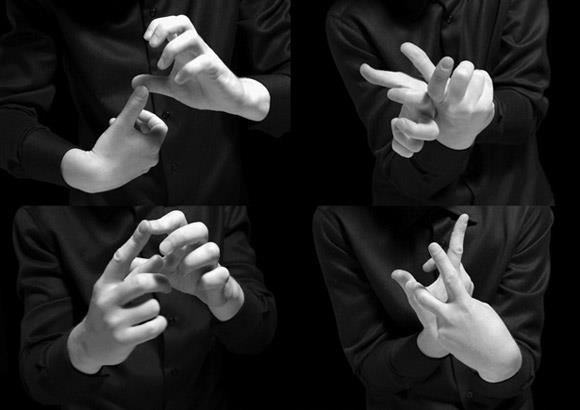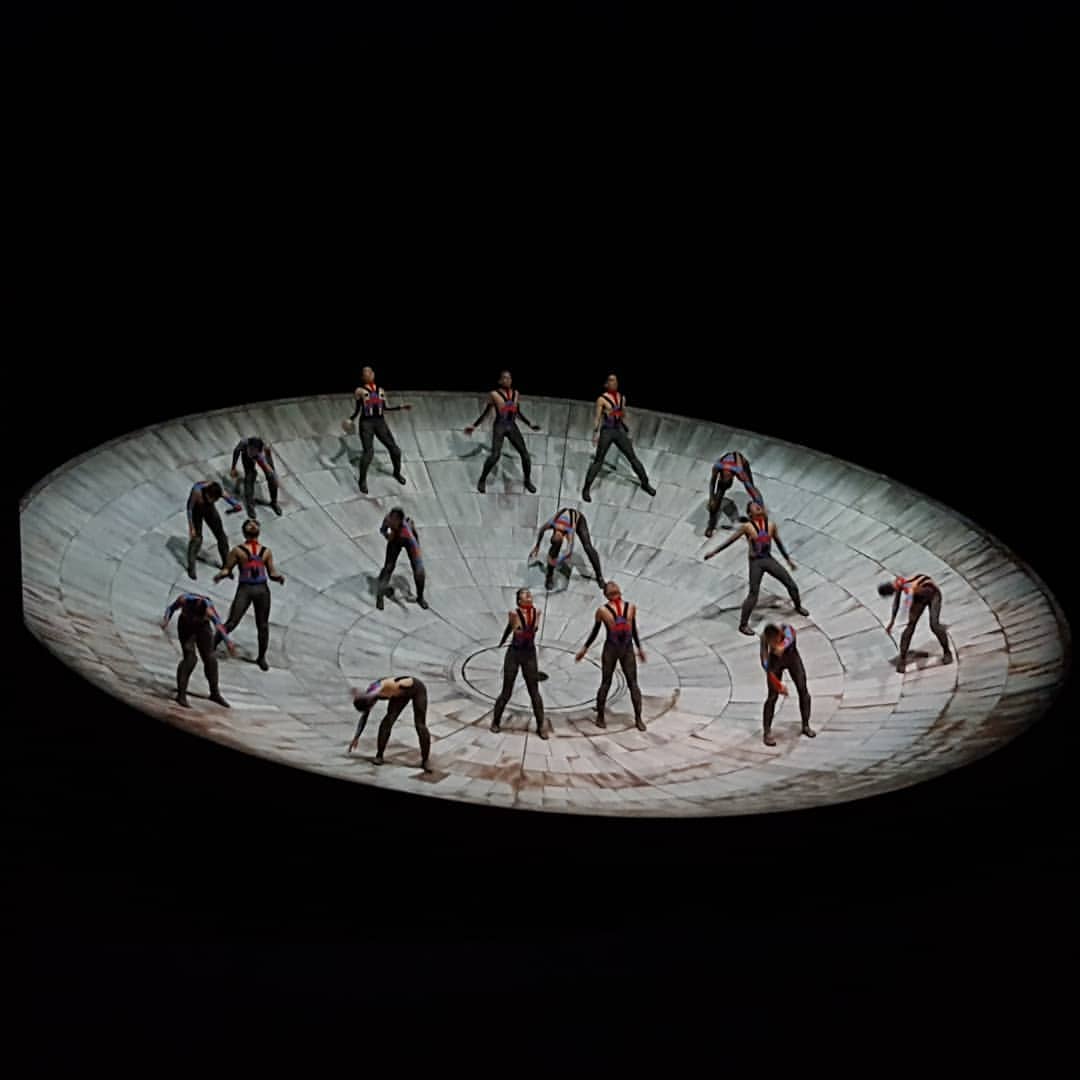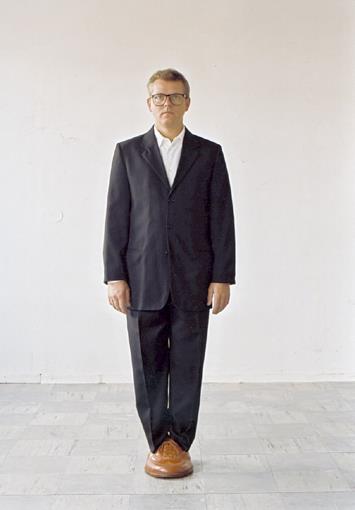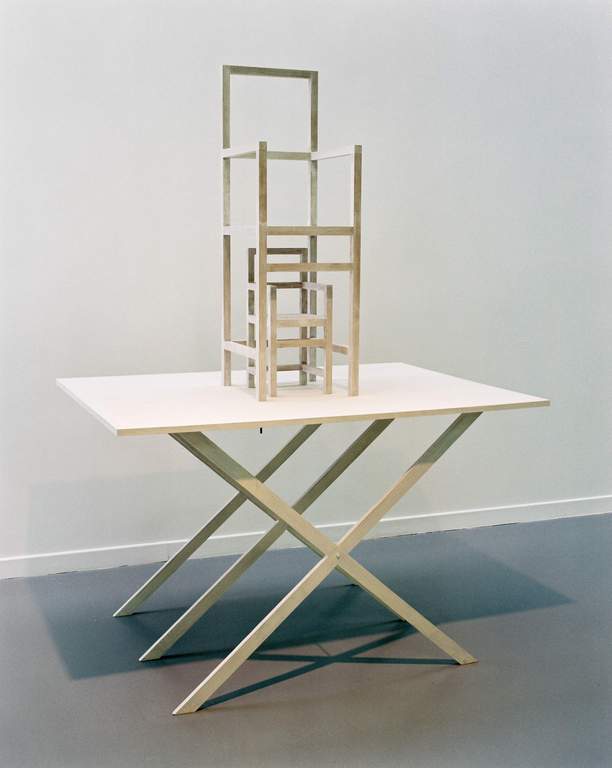


ONISHI YASUAKI
vertical emptiness (organic parabola)
Onishi Yasuaki uses wire, glue line and crystallized urea for this installation. The wire makes organic parabola line from the ceiling. He dripping glue through it, and vertical thin glue line is connecting our ground. Crystallized urea appears on glue line and wire. Empty space are filing some phenomena which is gravity, time, action, heat, crystallization. We can discover new landscape in it.

Adam Basanta
the sound of empty space
The sound of empty space explores relationships between microphones, speakers, and surrounding acoustic environments through controlled, self-generating microphone feedback. Amplifying and aestheticizing the acoustic inactivity between technological “inputs” and “outputs” – stand-ins for their corporeal correlates, the ear and mouth – the notion of a causal sound producing object is challenged, and questions are posed as to the status of the ʻamplifiedʼ. By building flawed technological systems and nullifying their intended potential for communication, the ear is turned towards the empty space between components; to the unique configurations of each amplifying assemblage.

Anne Nguyen
Autarcie
Autarcie (….) is a game of strategy, alternating between forward-facing dance moves and free digression, in which two hip-hop dance specialties, breakdance and popping, are brought into contact. For 50 minutes, four dancers, using very different performance spaces and techniques, engage in a frantic ritual. The front of stage is the rallying point where the four powerful individualities come together and devise a warrior dance directed at the audience. They are drawn towards the empty space beyond this common point of harmony, and each dancer thrusts herself into that space, in pursuit of territory, alliances and hierarchy.

Kohei Nawa
Throne
This work attempts to express that premonition as an immense “floating vacant throne”. If instances of power and authority have ruled since ancient times, and the pyramids provide one example—we must ask what the future will hold. Created with reference to the forms of festival floats and portable shrines that appear in the rituals and festivities of the East, the sculpture fuses today’s 3D modeling techniques with gold leaf applications that date back to ancient Egypt. In the frontal center is an empty room, space enough for a 2 to 3-year-old child to sit, suggesting that the new intelligence is still in a young state. Shining, spherical mirrors placed at the center in front and back. Made of platinum foil, they represent “the eyes overlooking the world”, where the frontal one faces the future and the back reflects into the past.

marleen sleeuwits
object no. 9
Marleen Sleeuwits is inspired by impersonal environments—places that could be anywhere and nowhere—such as vacant zones in airports, unoccupied corridors of hotels, and empty rooms in office buildings. The Netherlands-based artist is attracted to these non-spaces for the lack of impression they leave on people; her work focuses on finding ways of visualizing the identity of these voids and connecting to them in novel ways. Through structural contradiction, illusion, and the manipulation of scale, she aims to transform viewers’ awareness of their surroundings.

Hansje van Halem
w for w
Hansje van Halem has run her studio in Amsterdam since 2003. In between deadlines for book designs, she fills time gaps with type drawings and empty book space with patterns. With a “practice makes perfect” mind-set, she taught herself not to be afraid of failure. Her time gaps soon took the upper hand and became her core business. While working on commissions from patterns for endpapers, architectural typography, and all scales in between, she creates a lot of overproduction.

DAMIEN JALET
OMPHALOS
In ancient Greek Omphalos means navel as in navel or center of the world. Jalet’s creation examines the question of origins. The choreographer reflects on the human predicament and life in the cosmos, a recurrent theme in his work. For his first Latin American creation, Jalets brings together an ensemble of 20 dancers who perform to the music of Marihiko Hara et Ryūichi Sakamoto. This stunning performance makes light of gravity and instability, unfolding at the very edge of empty space. Exceptional event: the only performances in France as part of a world tour.

AXEL LIEBER
阿克塞尔利伯
Axel Lieber uses everyday items as objects of reference and alienates their materiality by coring them semantically and then filling thus evolving empty spaces with new content. In this way, new synthetic-aesthetic crossovers and oppositions arise that enliven the sculptures and guide the viewer into an intimate sphere at the same time.

JAN VERCRUYSSE
Les Paroles
According to Jan Vercruysse, art no longer has a place in this world. As a result, he seeks, through his work, a new place for art and new conditions in which to work. His earliest photographic works recreated historical subjects, such as self-portraits, still lifes and mythological scenes. Gradually, he evolved a sculptural vocabulary of narrow rooms, empty frames and bases without objects. The sacred spaces created by Vercruysse in these works are known as Chambres or Tombeaux and represent the artist’s last-ditched attempts to create art that refers only to itself. His later works, such as plaster pianos, blue Murano glass musical instruments and bronze and ceramic turtles, achieve a perfect equilibrium between conceptual conviction and aesthetic concerns, and also reflect a real pleasure of making.

Charles Atlas
Tornado Warning
Tornado Warning, draws from the filmmaker’s early memories of the tornado alerts in his childhood town of St Louis, Missouri. The piece contrasts an orderly space of grids and numbers with a chaotic environment of found images cut from old films, news footage, and the Internet. Ordinary objects fly around an empty room, swirling abstractions dominate the walls, and distorted bodies dance over images of radio waves. Seemingly in motion, the space of Tornado Warning appears unruly, alarming, violent and relentless.



MARNIX DE NIJS AND EDWIN VAN DER HEIDE
SPACIAL SOUNDS
Spatial Sounds (100dB at 100km/h) is an interactive installation that is capable of very intelligent behavior. Not only can the arm spin quickly or slowly, it can also make very well-defined movements in both directions. On the one hand, Spatial Sounds (100dB at 100km/h) lives a life of its own; on the other, it reacts very directly to the people in its space. The sensor can detect how close the visitors are and where they are in relation to the arm. When the installation scans the space, it makes inspecting movements and generates sounds that symbolize this scanning. It produces remarkably short, loud pulses and ‘listens’ to the reverberations from the empty space. The pulses combine different frequency ranges and rhythmical patterns. When visitors enter the room, they are detected immediately. The installation reacts in both a musical and a gestural way. The sounds relate directly to both the position of the arm and the dynamic ‘map’ of the space and the visitors. These sounds are very physical. For example, when the speaker is pointing at someone, it will generate a specific sound. This is also the case at high speeds and with several people in the room. However, the sounds and movements of the arm also tempt visitors to move around. Different locations in the space represent different sounds, as does the distance of the visitors to the rotating arm.